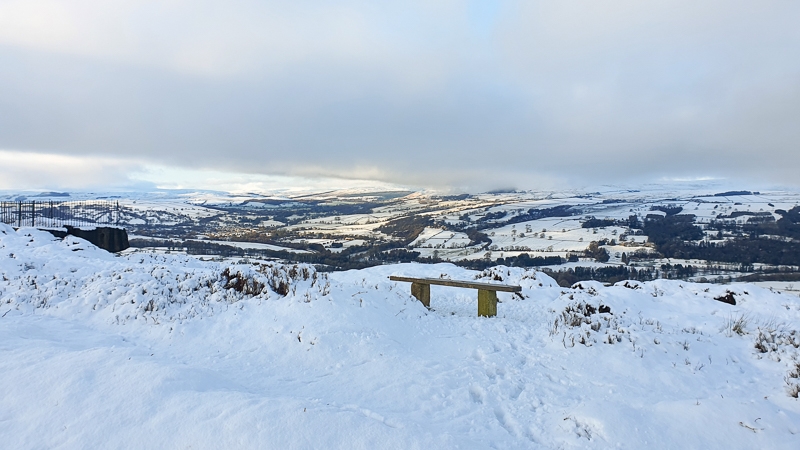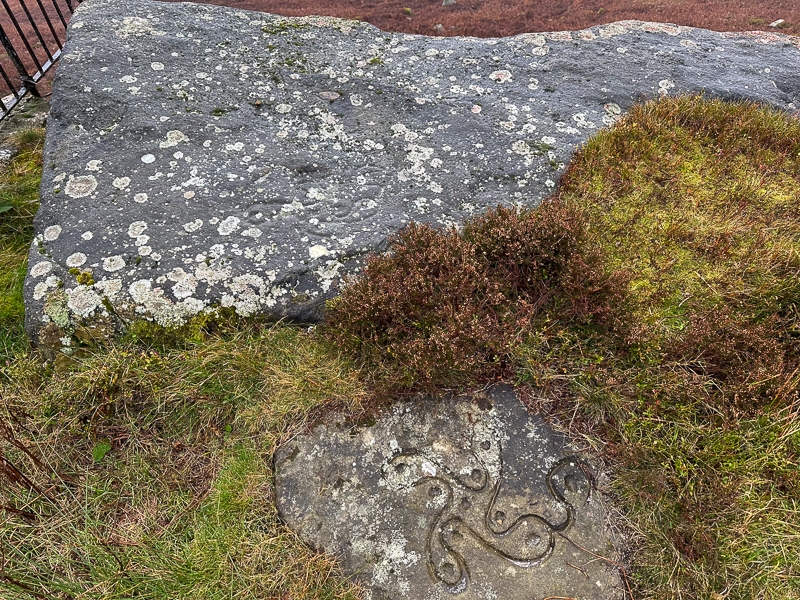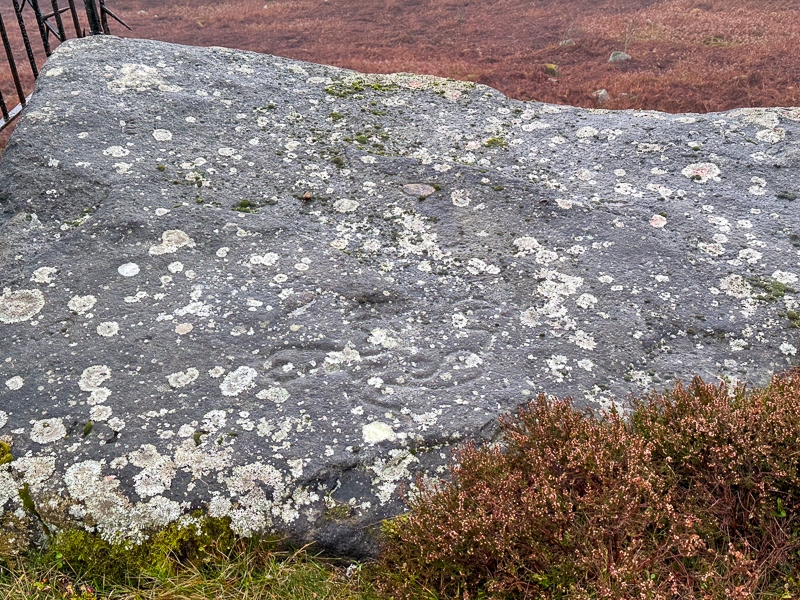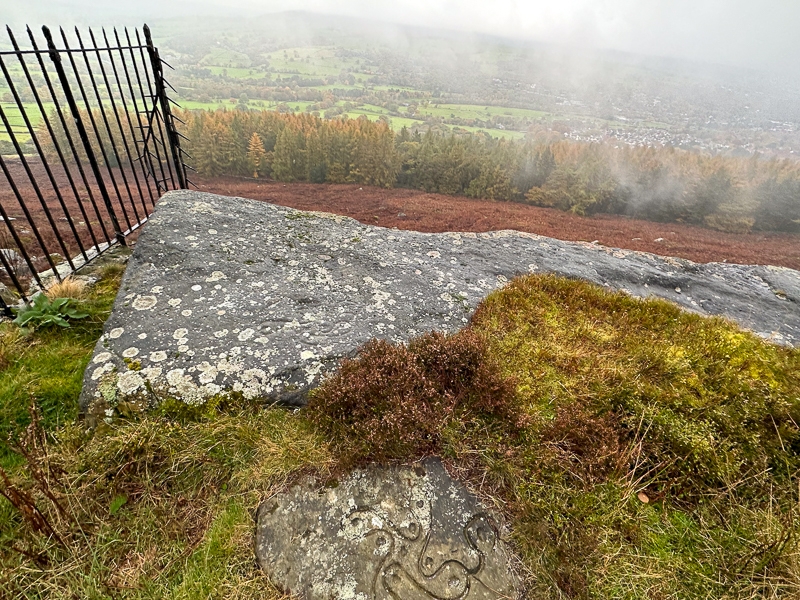The Swastika Stone, Ilkley Moor

If you walk from White Wells on Ilkley Moor across Spicey Gill and past Hebers Ghyll waterfall you'll come to the Swastika Stone.
Flat on the ground on a gritstone outcrop with views over Ilkley and beyond is a swirling swastika carved here thousands of years ago, probably in the Neolithic or Bronze Age.

The swastikas. The defined one in the foreground is a Victorian copy. The original is on the nearside of the rock behind.
This was well before swastikas were appropriated by the Nazi Party. This softer, rounder version is an ancient spiritual symbol, although the carving is so old that we can't possibly know for sure what it meant to the communities who used it at the time.
This is the only ancient rock art swastika motif in Britain. We don't know if it's linked to similar ones in Italy and Sweden.
You can see four swirling arms, each with a cup (a dip carved in the stone) in the centre. One of the arms has a semi-enclosed hook extending from its end, with another cup in the hook's curve. More cups sit between the arms outside of the main design, and there's one right in the middle.

Some people think the swastika carving might be linked to the Sun, as the symbol is associated with the Sun in some ancient civilisations. I like this idea. I can see Woodhouse Crag, the outcrop that bears the carving, from my house and it's in the direction I look most evenings to enjoy the sunset. The top of the moor is often ablaze with colour at the end of the day, and I wonder if our ancestors felt a connection to those sights too.
The cups might have served some purpose - they might have been filled with liquid for ceremonial or practical purposes. Some or all of the carving might have been painted. The art might have marked a gathering place, a thoroughfare, or, like today, a quiet place of contemplation.
Anthropologists puzzle over the ancient rock art on Ilkley Moor. They're desperate to work out what it means or what it was for, but we'll never know. Any meanings we come up with will be supposition, tainted by the perspectives and biases of contemporary society.

So walk to look at ancient rock art and find out what it means to you. To me, ancient rock art is about connection to the natural world.
We can conjecture all we like about the art being maps, or being functional, or whether that can't be the case because they're low-lying. I feel sure these shapes were about love and reverence and connection to nature.
Why? It's just the feeling I get, deep down, when I spend time around these carvings. What feelings do you get?
Please respect this ancient art. There are railings around the carvings; don't cross them. Please keep dogs on leads when walking across the moor to avoid disturbing wildlife. Don't smoke or start fires on the moor.
Share with your friends
Subscribe to learn more
Join me in exploring our natural world and cultural heritage as we learn how to protect and restore it. Get notified on my latest posts and a monthly newsletter on wider conversation topics for us to chat about.
Recent Posts
If you enjoyed this one, then you might like these too.